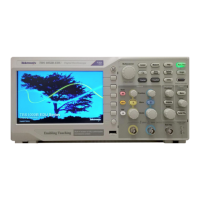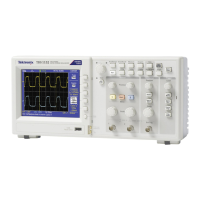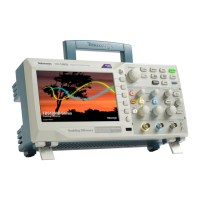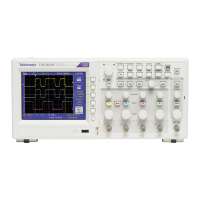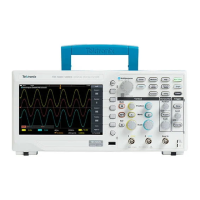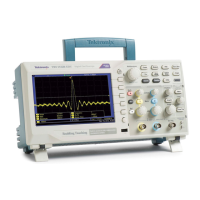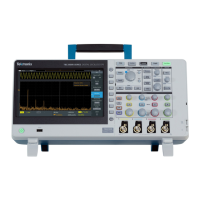Math modes Channel 1 – Channel 2
Channel 2 – Channel 1
Channel 1 + Channel 2
Channel 1 * Channel 2
FFT
Voltage measurement functions Mean, Cycle Mean, Cursor Mean, Max, Min, RMS, Cycle RMS, Cursor RMS, Peak-to-Peak,
Amplitude, Positive Overshoot, Negative Overshoot, High, Low.
DC balance 0.2 div at 1 mVdiv and up with the input 1 MW-DC coupled and 50 W terminated.
✓DC gain accuracy, Sample or
Average acquisition
This is the difference between the measured DC gain and the nominal DC gain, divided by the
nominal DC gain and expressed as a percent.
+/-3.0% step gain, derated at 0.1%/°C above 30°C.
DC voltage measurement
accuracy, average acquisition
mode
This is the accuracy of DC voltage DC voltage measurements acquired using average of >
16 waveforms.
Average of > 16 waveforms: ±((DC gain accuracy) X |reading - (offset - position)| + offset accuracy
+ 0.1 div + 1mV)
Analog bandwidth Defined in Section 4.6 of IEEE std 1057. The difference between the upper and lower frequencies,
at which the amplitude response, as seen in the data record, is 0.707 (-3 dB) of the response seen
in the data record at the specified reference frequency. Specifies only the -3 dB point. It does not
include the in-band response.
√ Analog bandwidth, DC coupled,
Sample or Average
200 MHz models:
DC to >200 MHz for 1 mV/div through 10 V/div.
100 MHz models:
DC to >100 MHz for 1 mV/div through 10 V/div.
70 MHz models:
DC to >70 MHz for 1 mV/div through 10 V/div.
50 MHz models:
DC to >50 MHz for 1 mV/div through 10 V/div.
Analog bandwidth selections 20 MHz bandwidth limit ON/OFF
Upper-Frequency limit, 20 MHz
bandwidth limited, typical
This is the upper frequency for Analog Bandwidth when the instrument has 20 MHz bandwidth
limiting turned on.
20 MHz, ±25%
Specifications
TBS1000C Series Specification and Performance Verification 3

